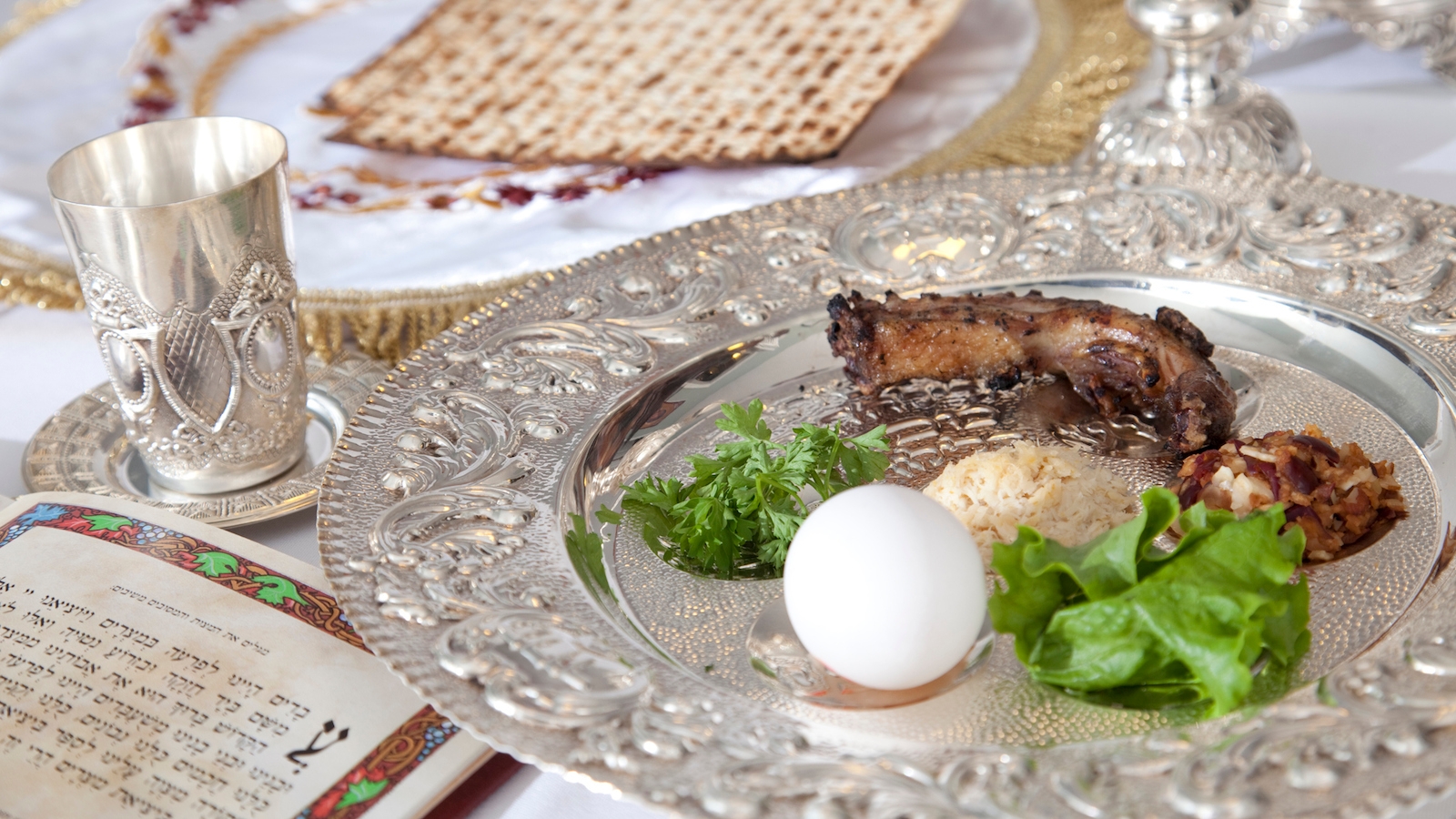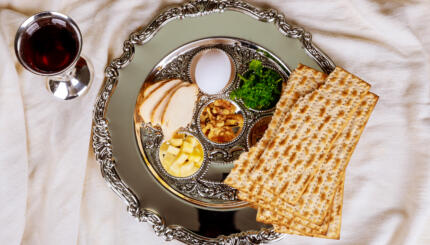Passover is one of the major festivals of the year where the home rituals are of such significance and importance that they overshadow those done in the community. The central and transcendent ritual of this festival is the home seder (meaning “order”).
The seder and special dietary requirements of Passover are so important that it takes weeks to prepare for the festival. Nowadays, it has become the season in which Jews do their spring cleaning. The house must be prepared for the removal of all hametz (leaven), and it is cleaned from top to bottom prior to that. Hametz means food prepared from five species of grain–wheat, barley, oats, spelt and rye–that has been allowed to leaven.
According to Ashkenazic (Eastern European) practice, rice, millet, corn, and legumes (called “kitniyot”) are also avoided because these food items could be confused with grain. In the State of Israel, Sephardic (Mediterranean) practice has been adopted by most Jews, and kitniyot are eaten. Even other food, when mixed with hametz, becomes tainted and considered “leaven.” That is why observant Jews will replace most of their household food items with food that is marked “kosher for Passover” just in case any of it has been touched by leaven. Matzah, the unleavened bread that is eaten during Pesach, can be made from any of the above-mentioned grains, but it must be watched so that it does not leaven.
After spring cleaning, the search, nullification, selling, and burning of leaven take up much of the household preparation time for Passover. When a large amount of leaven is found that a person does not want to burn, he or she has the option of selling it to a non-Jew only for the duration of the holiday (mekhirat hametz). The sale has to take a legal form, using a formal bill of sale. The party in question gives the rabbi a power of attorney, and the rabbi is then authorized to sell the leaven on their behalf. The rabbi sells it to a non-Jew and buys it back at the end of the holiday. Since the process is a formal sale, it satisfies the requirement of forbidding possession of leaven during Passover.
With your help, My Jewish Learning can provide endless opportunities for learning, connection and discovery.
For the rest of the leaven, there is a formal search called bedikat hametz that takes place right after sundown on the night before Pesach. A blessing is said, and the search is done by candlelight or flashlight, with a small bag to sweep up the crumbs, usually by using a feather. Since the house has already been cleaned thoroughly, it is customary to put crumbs in a few places where they can be easily found. The following morning, the leaven is burned (biur hametz). No hametz is eaten after this ritual until the end of Passover.
In most homes it is customary to use a special set of plates and utensils during Passover. This is to ensure that none of it has ever been touched by hametz. Alternatively, it is possible to “kasher”–make kosher–many utensils for use on Passover. All tables, closets, and cupboards used for leaven are also cleaned and kashered for Passover. It is customary to cover them before using them for Pesach.
Once cleaning, kashering, and dealing with hametz have been completed, the home is then ready for the highlight of the Pesach festival–the seder. But despite the fact that the seder(s) take place at the beginning of the holiday, Passover pervades the traditional Jewish home for eight days (seven in Israel and among liberal Jews worldwide), with a family’s food, plates, utensils, and countertops all uniquely kosher for Passover.
kitniyot
Pronounced: kit-nee-YOTE, Origin: Hebrew, meaning "little things," the term here refers to legumes, corn, rice and other non-hametz foods prohibited for use on Passover by some Ashkenazic rabbis in the medieval period. Many Sephardic Jews (and Conservative Jews) do allow them on Passover.
kosher
Pronounced: KOH-sher, Origin: Hebrew, adhering to kashrut, the traditional Jewish dietary laws.
Pesach
Pronounced: PAY-sakh, also PEH-sakh. Origin: Hebrew, the holiday of Passover.
seder
Pronounced: SAY-der, Origin: Hebrew, literally "order"; usually used to describe the ceremonial meal and telling of the Passover story on the first two nights of Passover. (In Israel, Jews have a seder only on the first night of Passover.)
Sephardic
Pronounced: seh-FAR-dik, Origin: Hebrew, describing Jews descending from the Jews of Spain.



